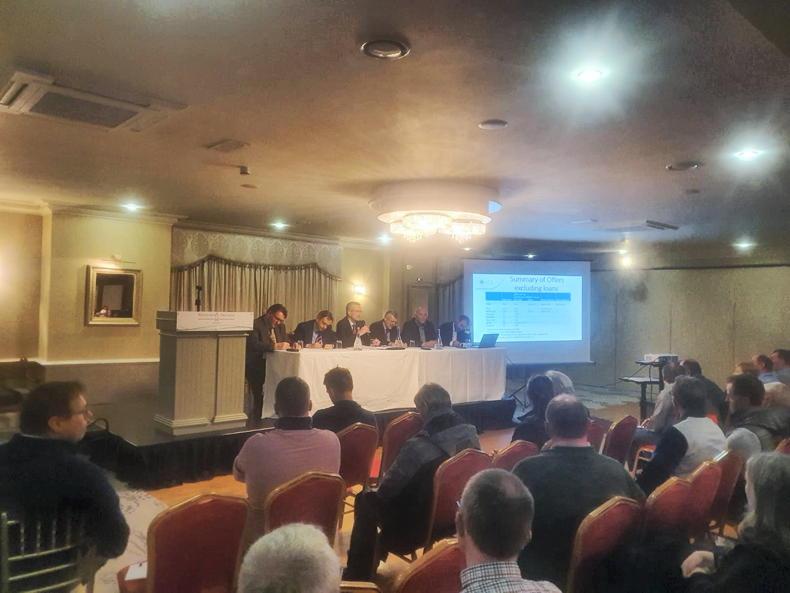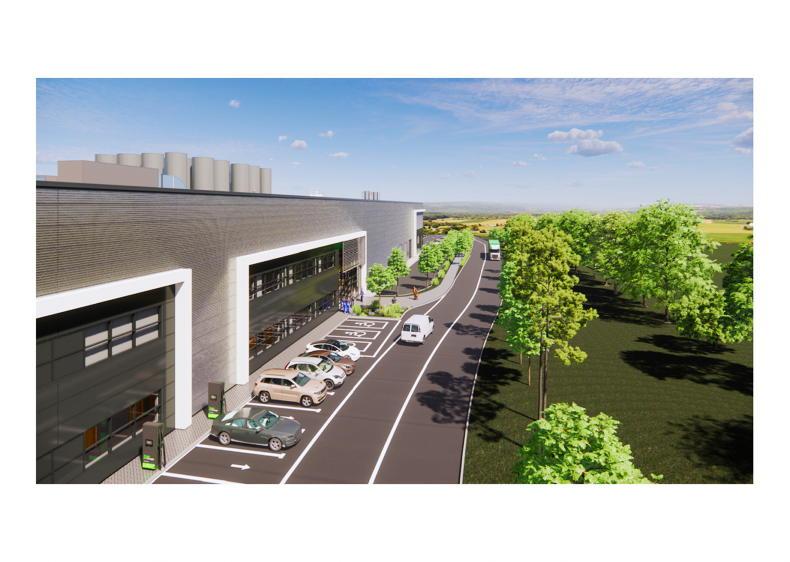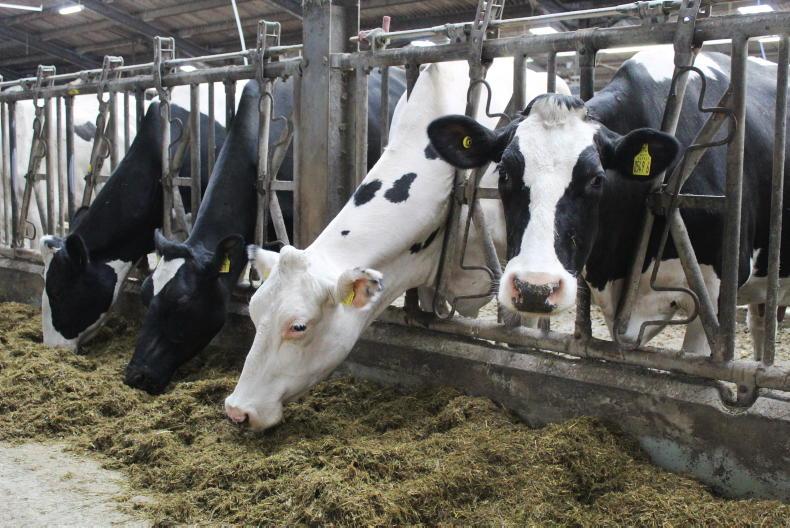I’ve gone to hundreds of meetings over the years. However, I think last Thursday’s meeting about fixed milk prices in the Dolmen Hotel in Carlow might be the toughest I’ve ever had to report on.
Even describing it is a challenge. It was “facilitated by the IFA”, as my colleague Declan O’Brien said in this week’s Irish Farmers Journal previewing it. And indeed the top table comprised of president Tim Cullinan, who chaired the meeting, director general Damian McDonald, dairy chair Stephen Arthur, acting dairy executive Karol Kissane, and the IFA’s legal counsel, James Staines. The meeting was anchored by Waterford IFA chair John Heffernan, who was outside not just his county but his region.
Apart from the article in the Irish Farmers Journal announcing it, there wasn’t a whole pile of publicity about the meeting.
Practically everyone there was due to word of mouth. And while it was a long way from Walsh Park, it was essentially a meeting organised by a group of Waterford farmers. Carlow was a logical location because it is in the heart of the Tirlán region, and this meeting was exclusively about Tirlán’s fixed-milk-price scheme. More specifically, the 17th iteration of that scheme, known as FM17.
The room was packed, with over a 100 people present. One early speaker said he had “only” 30% of his milk fixed, and was there not to seek a solution for his situation, but in solidarity with those whose livelihood is threatened by the losses they have incurred this year, and are facing for 2023.
And then it started. Three hours, mostly of personal testimonies from people who feel they were sleepwalked into disaster by their co-op. Who are losing money on most of the litres of milk their cows give, and are heading for another year of continued significant losses. It was harrowing at times.
FM17 differences
We learned from farmers that FM17 was unusual in a number of ways.
Firstly, it took a good bit longer than normal. The normal process is that farmers receive an offer to tender a specific volume of milk for a specified period of time. They have a few days to return the document, and are informed of their allocation about two months later.
Normally, each scheme was massively over-subscribed, so farmers had developed the habit of over-tendering. If you wanted 100,000 litres, you applied for 200,000 or even 250,000 litres.
In the case of FM17, farmers were invited to tender in February 2021.
People had received almost their entire allocation, which was at least twice what they were expecting and hoping for.
Farmers spoke on Thursday night of quick discussions around the dinner table at the busiest time of the year before filling and returning the form.
It seemed similar to previous schemes. The duration on this occasion was three years, until the end of 2023. There have been 12-month schemes, there have been ones that lasted five years. People over-tendered as they had become accustomed to.
This time, it was four months before the allocations were announced. That was the first difference, but people weren’t in any way concerned about that.
However, when farmers had their allocations confirmed, in June, it was immediately apparent that this scheme was different.
People had received almost their entire allocation, which was at least twice what they were expecting and hoping for.
On Thursday, speaker after speaker told us they immediately contacted the co-op, expressing worry.
They were told nothing could be done about it. Because the prevailing milk price was above the 32c/l stipulated in the scheme, money was clawed back from the payments that had been made for February, March, and April when the May payment was made.
Some farmers were in multiple schemes, and were now very committed to the fixed milk scheme.
And then fertiliser, feed and fuel prices started to climb.
By October, 32c/l looked a moderate price. However, the price everyone else was getting wasn’t that far ahead of the fixed price.
In early 2022, as the milk price started to rise, that consolation disappeared. And at some stage, as the milk statements showed a yawning gap between the fixed price and the current price, it dawned on farmers that the anti-volatility measure was no longer part of the scheme.
For three hours we heard from farmers who have not felt heard for a long time
It operated by curbing the differential between the fixed price and the prevailing price. Previously, when the fixed price ran well ahead of a dull month-to-month price, this anti-volatility measure took money from farmers.
One farmer spoke of how he had “lost” as much as €5,000 through this element of the scheme.
Origin
It’s worth remembering what motivated the fixed-milk-price scheme in the first place. It was Glanbia that suggested it to its suppliers about 10 years ago to minimise exposure of suppliers in the event of another 2009.
Milk price fell below 20c/l that year, and farmers were producing at a loss.
As Glanbia geared up for the end of quotas, the expectation was that dairy expansion in its production region would be very high.
Expanding farmers and new entrants, who would be carrying significant fixed costs, could be wiped out by another 2009.
At the time, many were predicting dull prices as expansion swelled supply after 30 years of static output.
And so the fixed-milk-price scheme was born.
Initially, there was a commitment for participants to buy feed as they sold milk forward to insulate them against input costs.
Some farmers complained that this was “tied aid”, a way for Glanbia to sell meal to suppliers. Over time, this intelligent aspect of the scheme was dropped.
At some stage, the anti-volatility “price-banding” was introduced to the scheme. It may have been based on a similar mechanism that had formed an important part of a price package for Glanbia’s fresh milk producers that resolved years of disputes.
Again, farmers complained when this measure worked against them. And it too was dropped, with now disastrous consequences.
It’s possible that all the focus was on protecting farmers from another 2009, another milk price slump.
But I’m not sure there is any excuse for running a fixed-price scheme for the members of your co-op to protect them from volatility that utterly fails to countenance the possibility that both milk price and input prices could go strongly in the other direction. And that is what has happened.
Next steps
The meeting endorsed a proposal that four farmers enter an informal negotiation process with Tirlán as sample cases. This is to happen over the next number of weeks.
If that fails to achieve any progress, the next step would be to trigger a formal mediation process. This is provided for in the contract.
The meeting was told that Tirlán was unwilling to engage with the group of Waterford farmers James Staines has been assisting until this was highlighted to them.
Should mediation not lead to results, there is also provision in the contract for a formal arbitration process.
Staines was at pains to highlight just how complex and time-consuming arbitration can be.
For proof of that, one only has to look to Kerry, where arbitration over the term “leading milk price” between the co-op, representing suppliers and processor Kerry Group plc has been in train for about seven years now.
Staines also pointed out that any potential legal action might flounder unless all those steps had been exhausted first. He did add that, in his opinion, the contract, while strong, was not watertight.
For three hours we heard from farmers who have not felt heard for a long time. The room was charged as people spoke openly and emotionally about their circumstances, and their deepening despair at what they see as the ineffectivenesss of the response from their co-op.
Tirlán has put 4.2c (ex VAT) on to the price of all milk, fixed and floating. This brings the 32c/l up to 36.2c/l.
There have been other support measures around inputs. Farmers were also offered to take milk over 35% of their total volume out of FM17 and its 32c/l. It would be placed instead into an alternative scheme that would give 40c/l for 2022, and 38c/l for 2023. The catch is that it would also be fixed for 2024, also at 38c/l.
Unless the war in Ukraine is resolved, that looks like a price that will be way short of the market price. And more crucially, if that conflict continues, input prices will probably mean that 38c/l is below breakeven.
It suggests that while the board and management have been talking to their own suppliers, they are still guided by their own narrative. A narrative that farmers as business people had made a business decision and would have to own it. The co-op would help as best it could, but responsibility rested solely with the farmers who fixed. And only a few are in serious bother.
The testimonies on Thursday night would suggest it’s far more than a few who are sustaining unsustainable losses. And there may be many more people who weren’t there, unaware the meeting was happening, or unwilling to admit their plight. It may be that as word of Thursday’s event spreads, they will feel encouraged to step out of the dark shadow they are in.
Not unique
Almost every co-op has fixed-price schemes. However, according to IFA analysis shared at the meeting, Tirlán has a much higher participation in fixed-milk-price schemes than any other co-op.
Twenty-five per cent of its milk is fixed. Only North Cork’s suppliers are exposed to anything like the same degree.
The scale of the financial loss becomes apparent when you realise that one-quarter of Tirlán’s three billion litres is 750m litres of milk a year. There is currently a 17c/l gap between the fixed price, and the base price. Over a full year that’s €127m.
A lot of the fixed price schemes that preceded FM17 wind down after this year, but there will still be hundreds of millions of litres of Tirlan’s milk supply tied into fixed schemes next year. And all projections for fertiliser and feed are that it will be at least as expensive next year as this.
Respect for Tirlán
I also find this article difficult because I have a lot of respect for Tirlán and how it conducts itself and its business. I’m proud to be a member of the co-op.
But it is becoming clear that this is an enormous mess, and the co-op has not handled it particularly well.
Of course, in early 2021, no one could see that fertiliser prices would skyrocket in the last four months of the year as gas became scarce and expensive. And nobody could have predicted that Vladimir Putin would send the Russian army into Ukraine.
But an anti-volatility mechanism is meant to protect its participants from risk. We heard from person after person that they relied on their co-op for advice over the years.
For whatever reason, Tirlán failed to see that an anti-volatility scheme was rendered much less safe for its participants by the removal of the anti-volatility mechanism.
Having taken that step, allowing individual farmers to have the majority of their milk in a succession of fixed-milk-price schemes was now was exposing them to massive risk if prices and input costs ballooned.
That is where the danger lay, however unlikely it might have seemed in February 2021. But that is what happened, and, in my opinion, Tirlán has not done enough for its farmers.
Opportunity
It’s said that a good defender anticipates danger, and a good attacker anticipates opportunity. Tirlán’s fixed-milk-price schemes didn’t anticipate dangers, but the co-op still has the opportunity to take the necessary steps to help the farmers now exposed by their participation in it to catastrophic losses.
I really hope the board and council lead the co-op’s shareholders and suppliers to provide an effective support/rescue scheme.
If a farmer’s shed burned down, we’d all load up bales of straw or silage to help as best we could. Will farmers really stand by and watch their neighbours suffer, or will the co-op ethos shine through?









SHARING OPTIONS